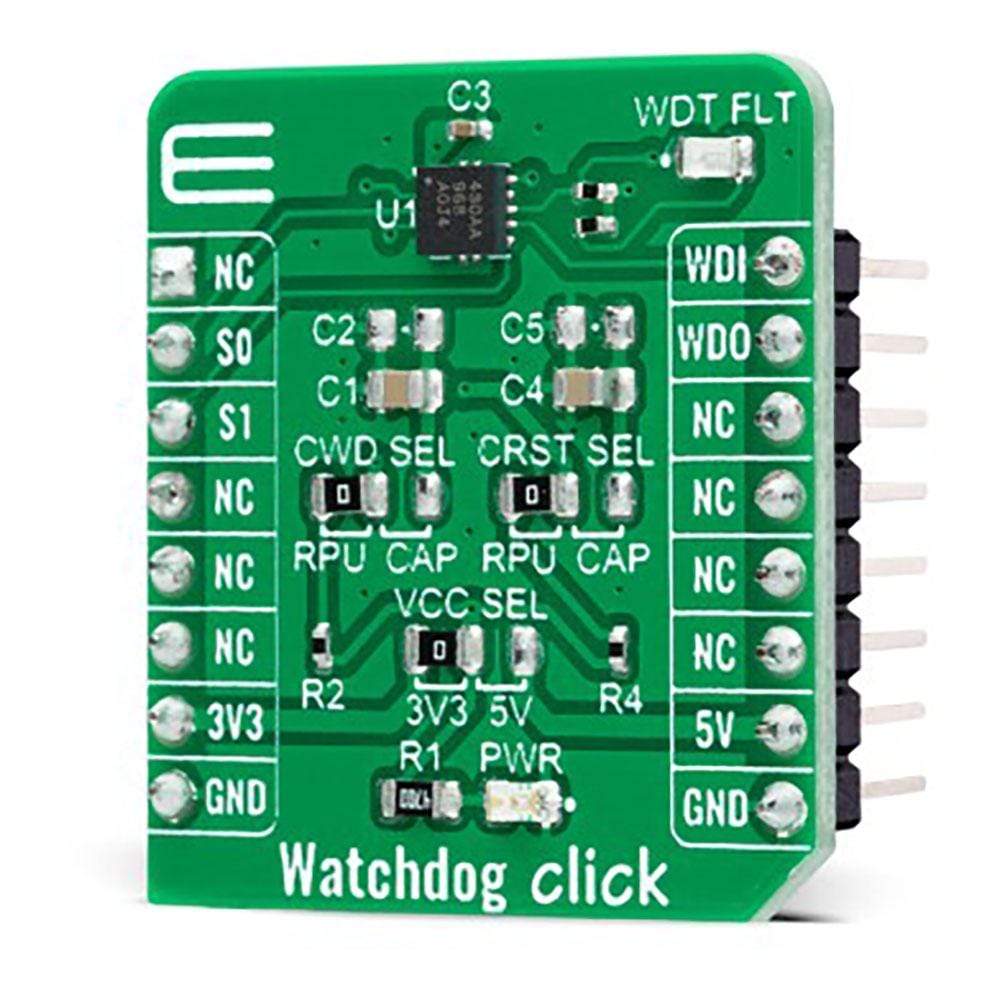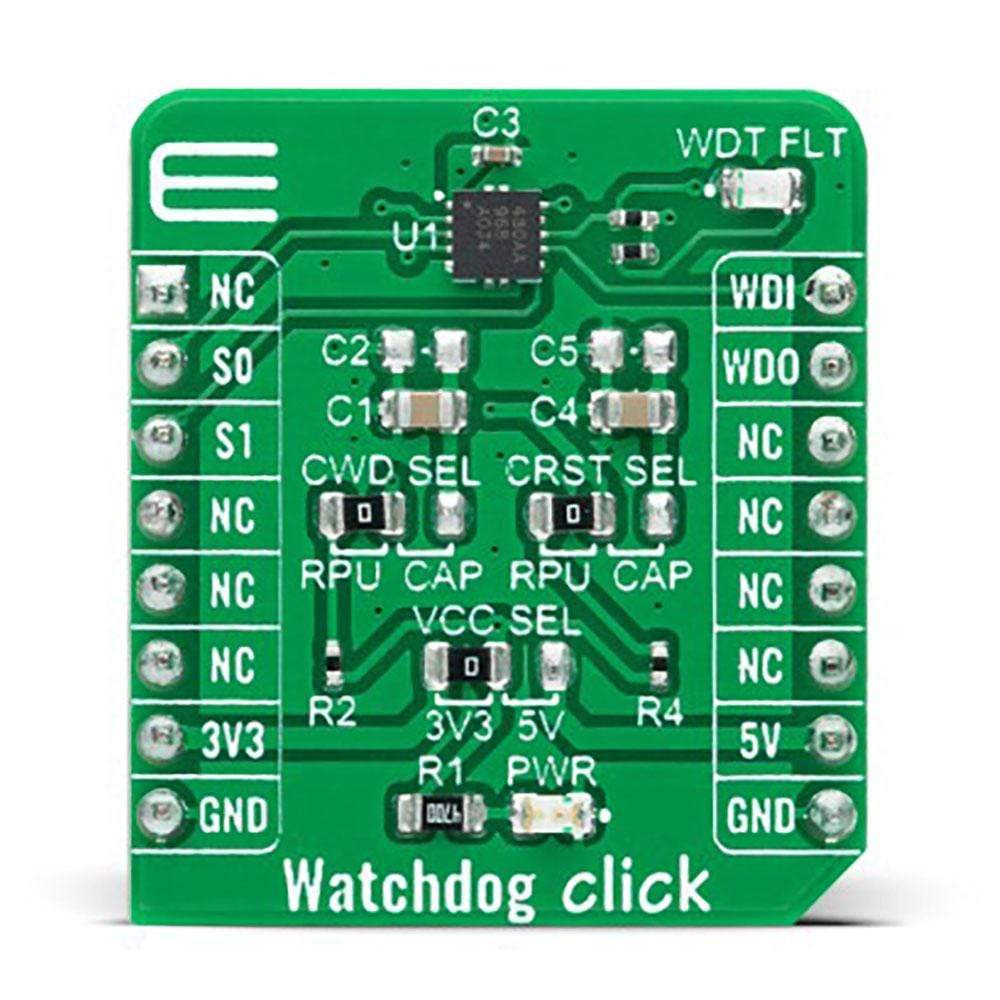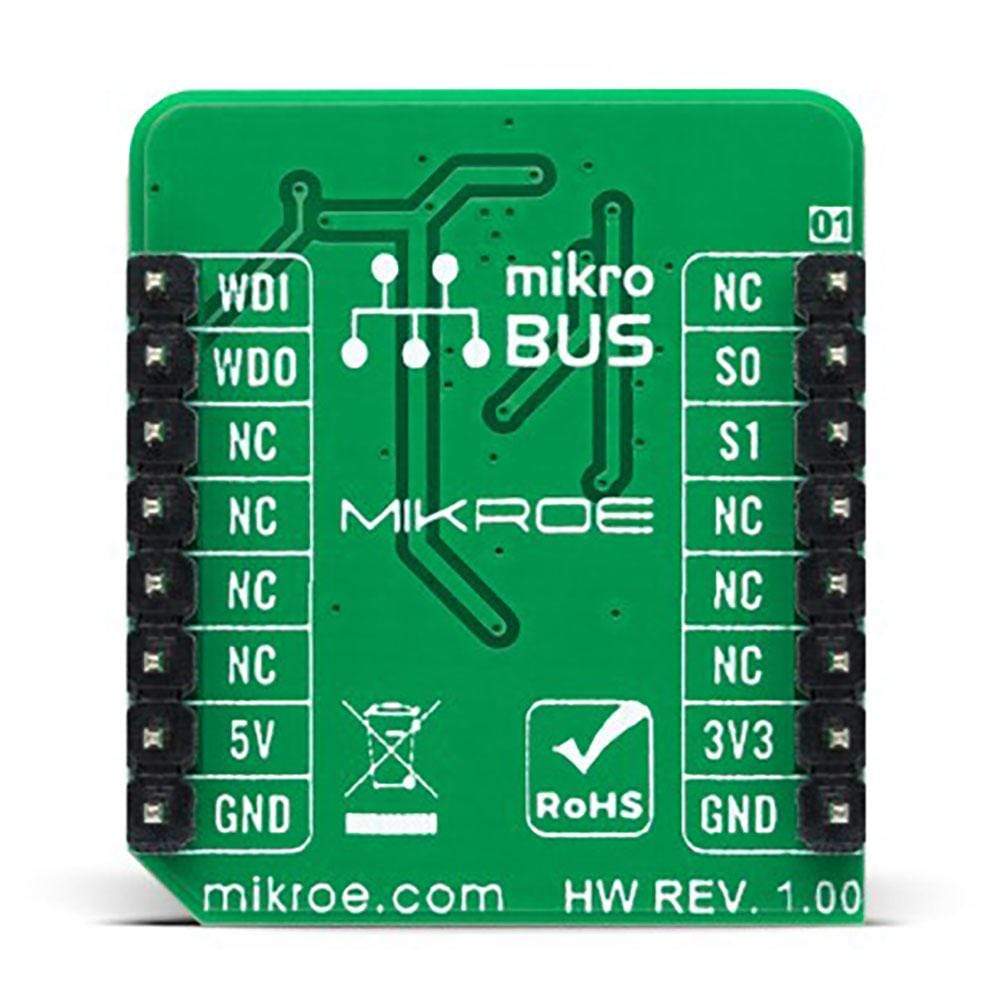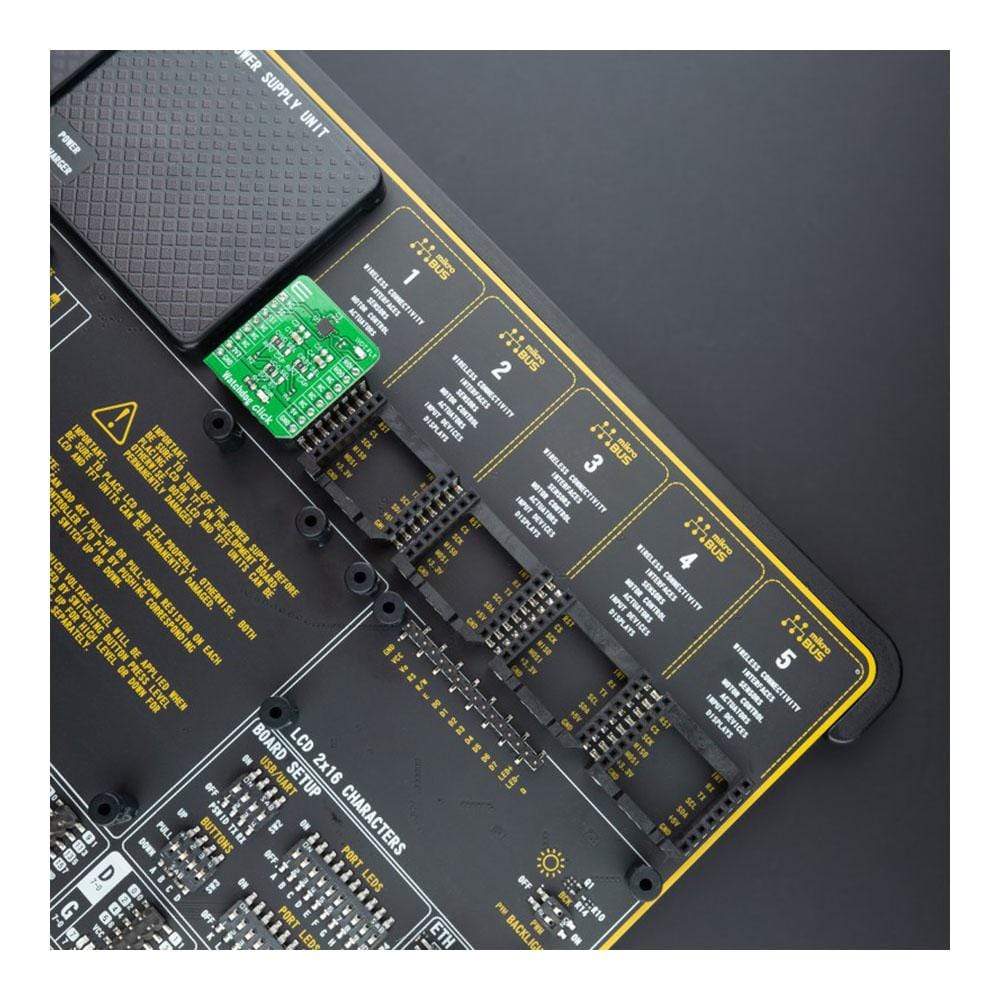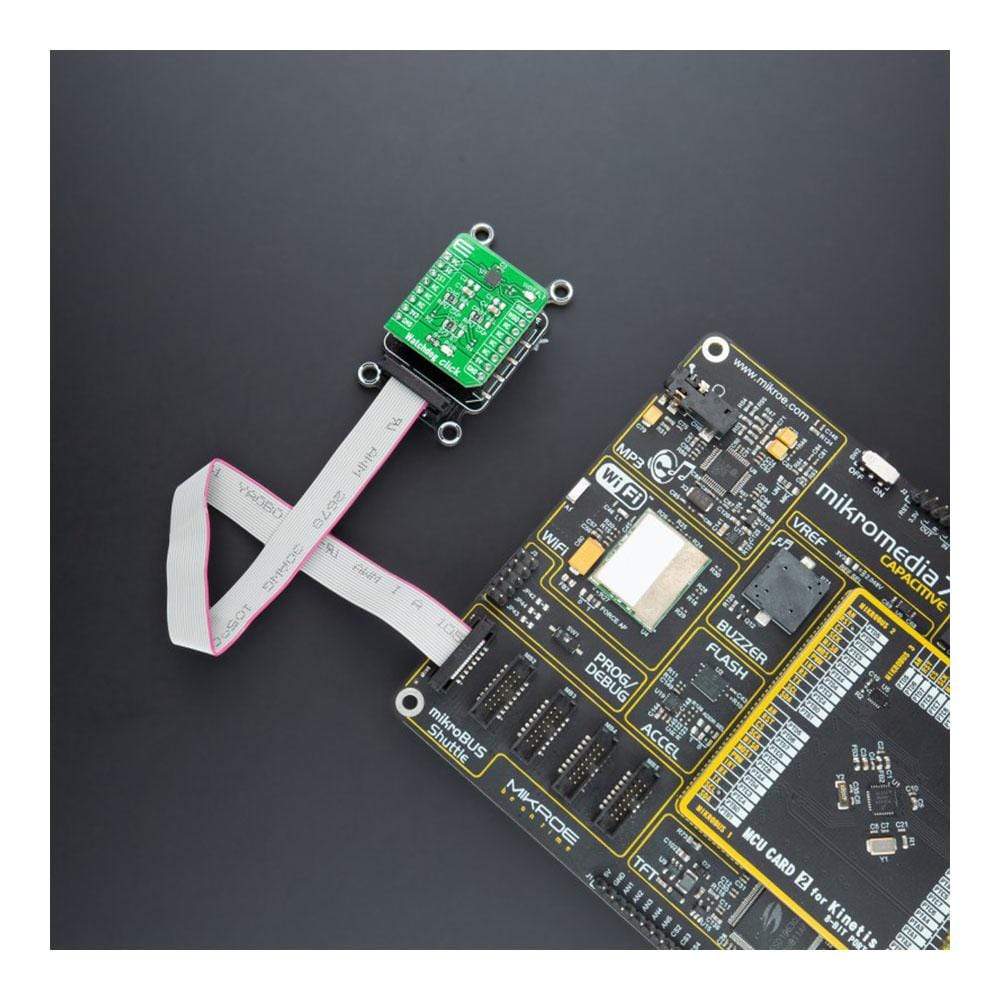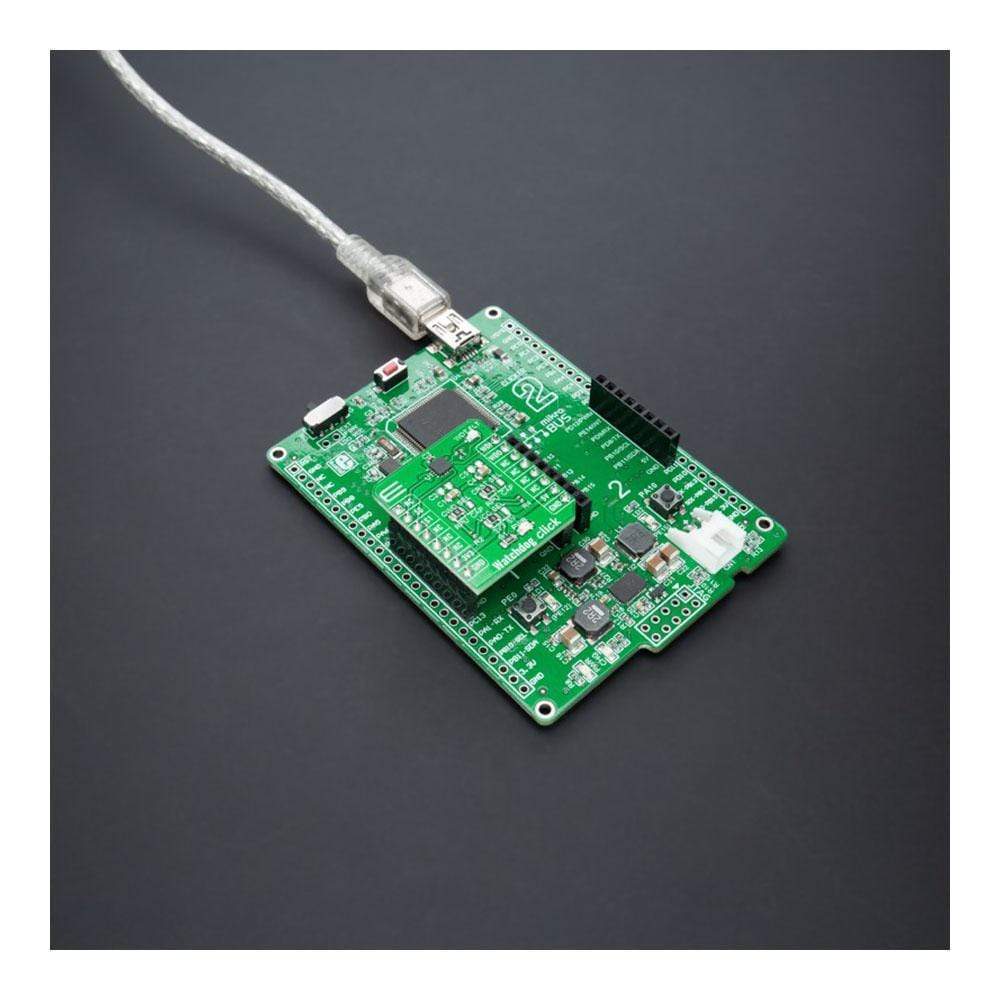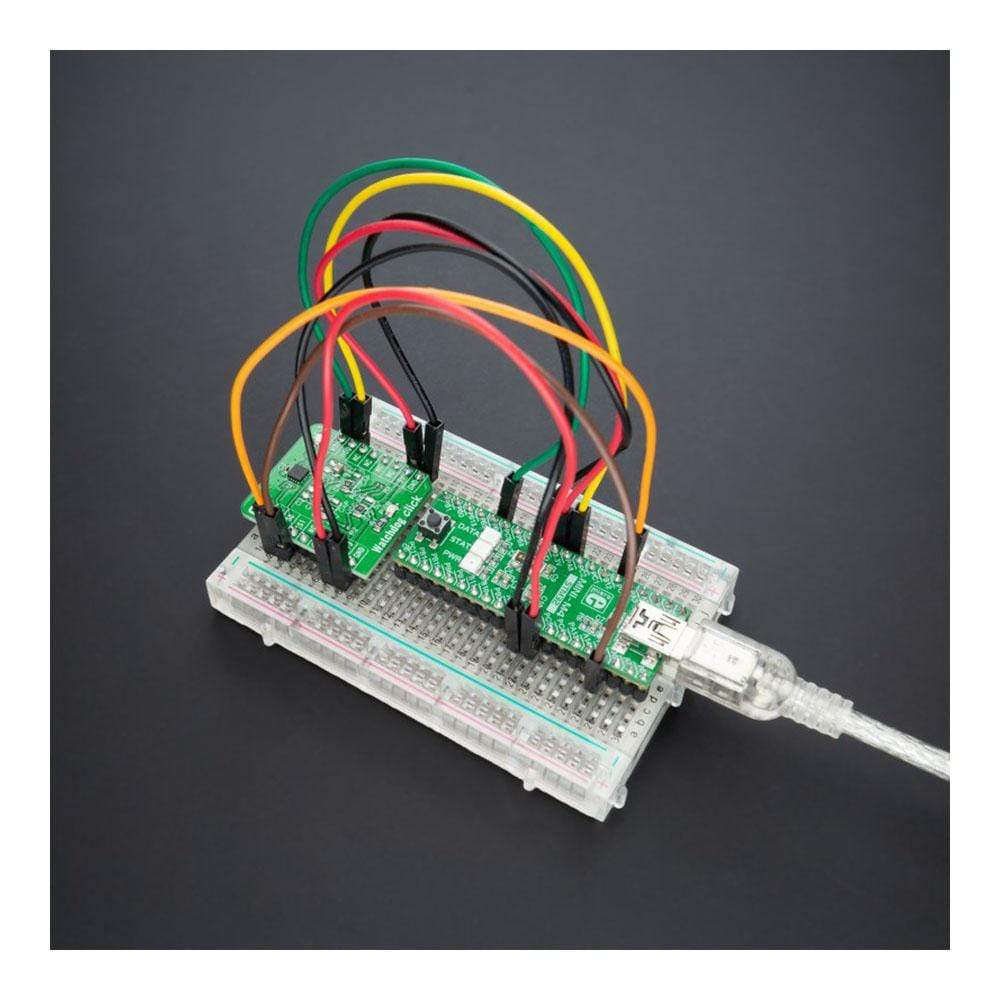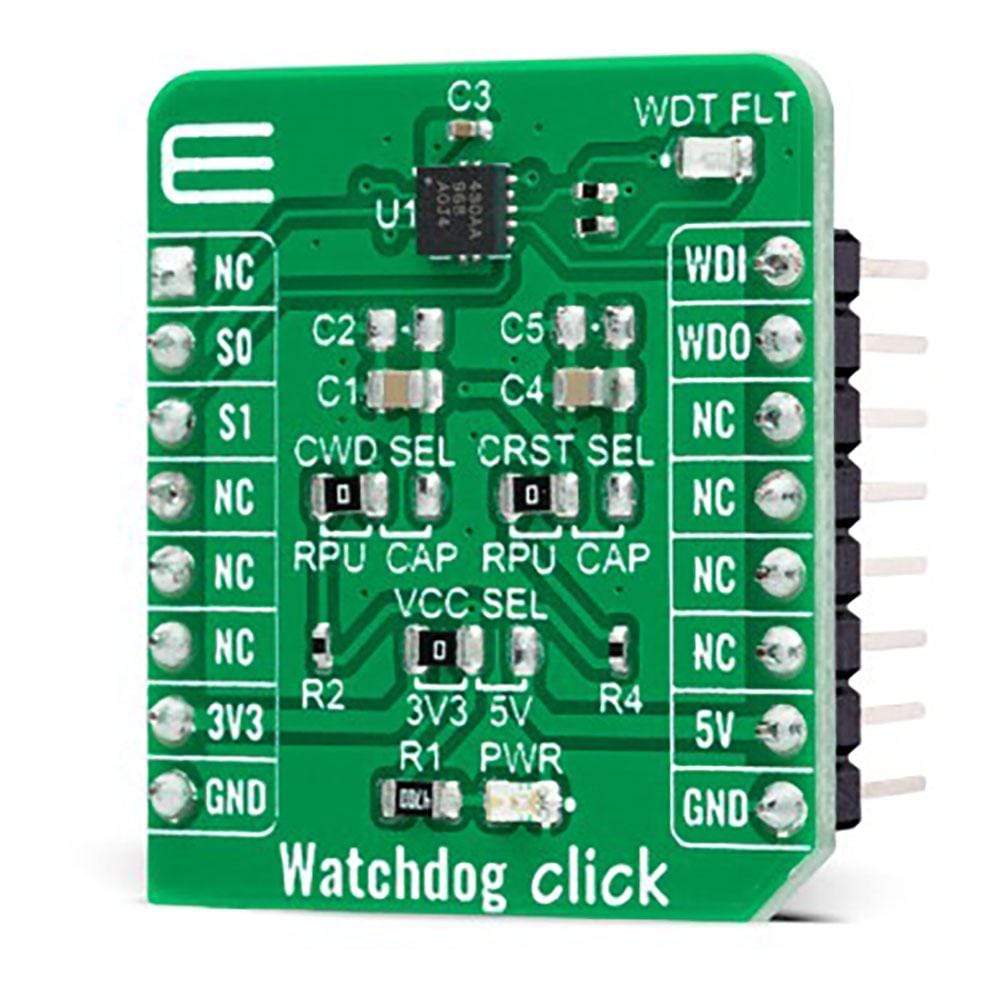
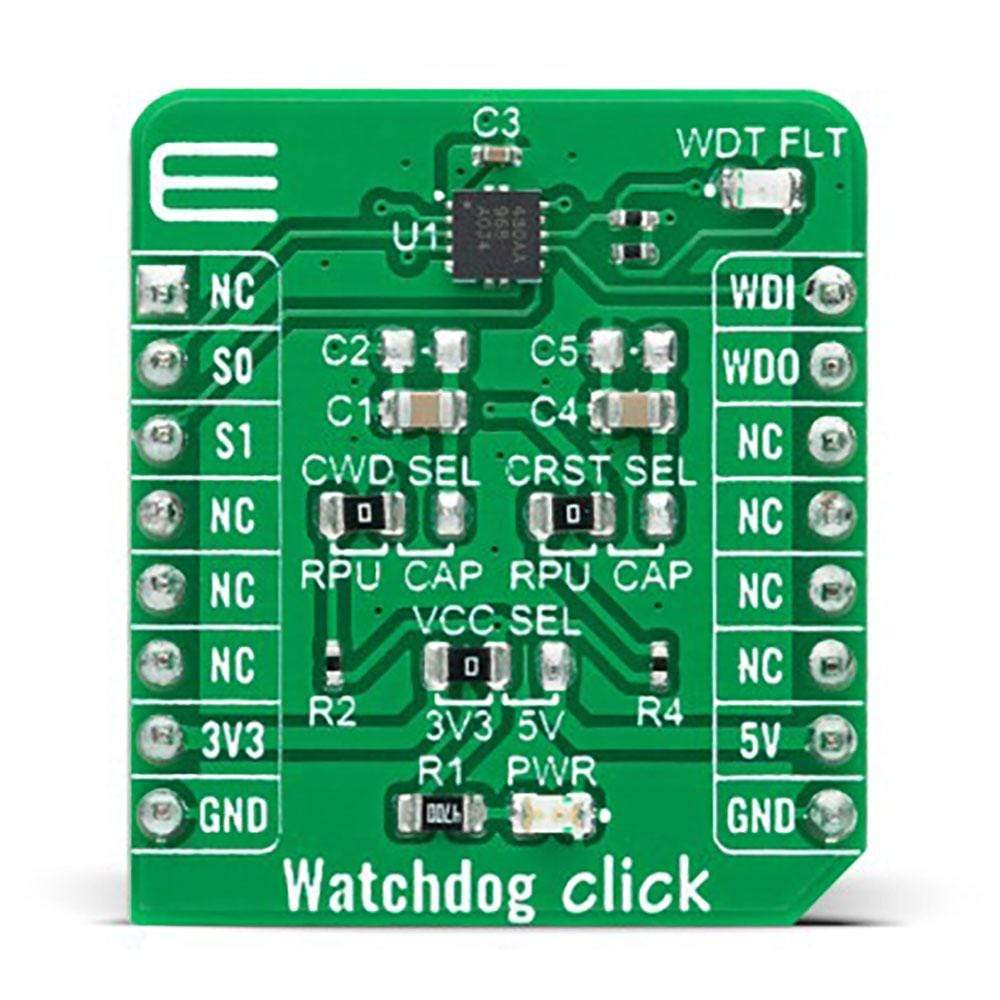
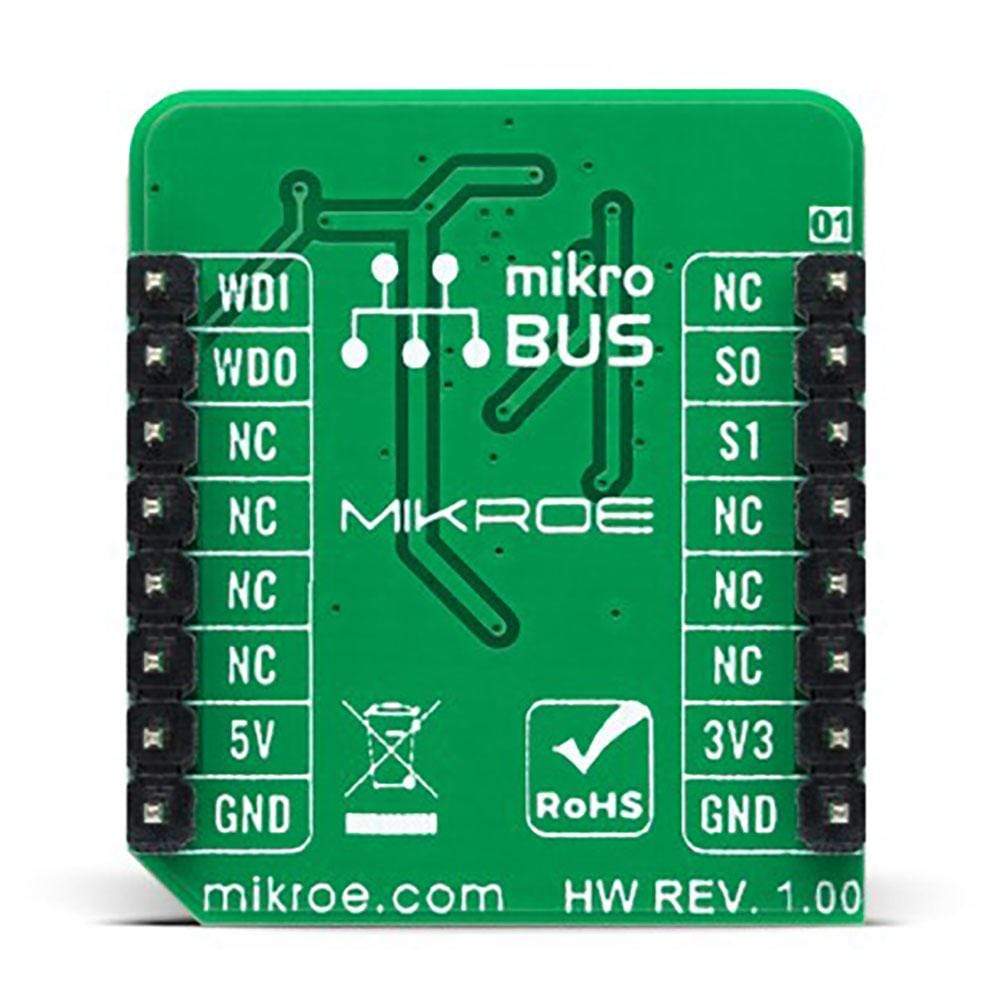
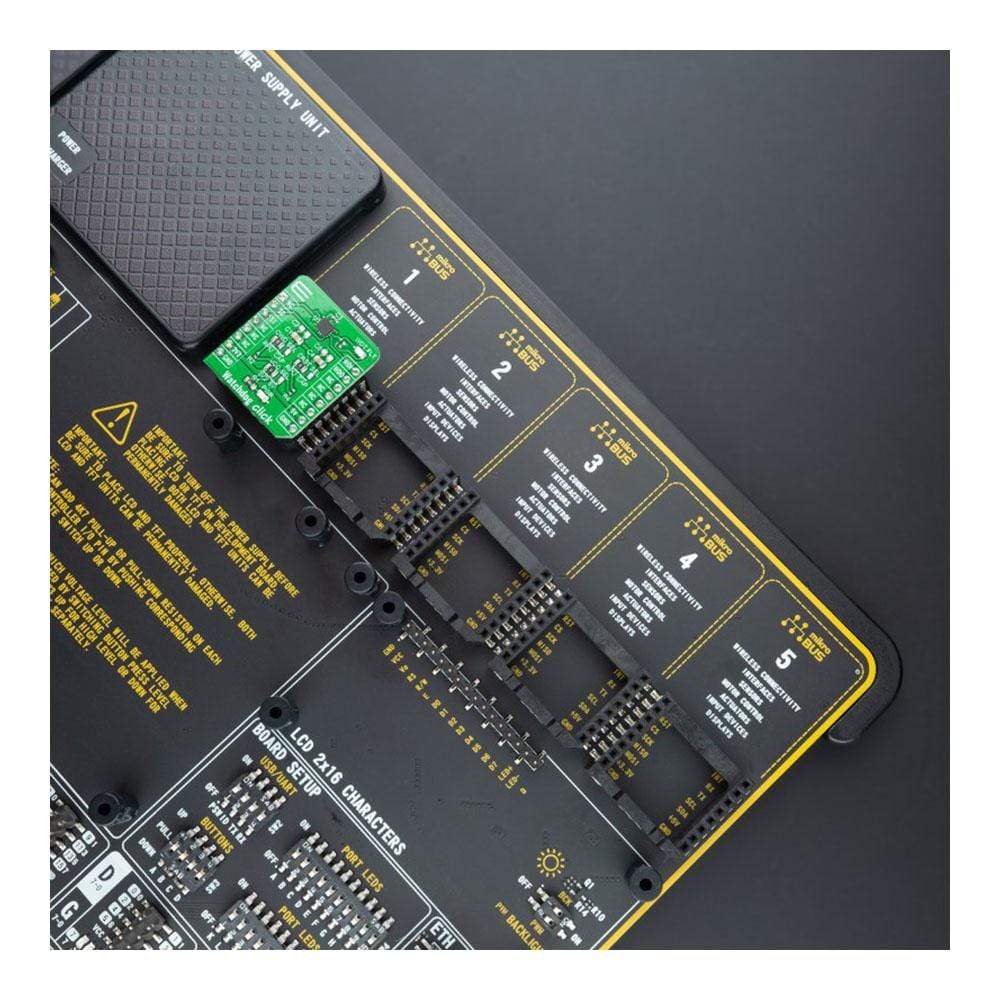
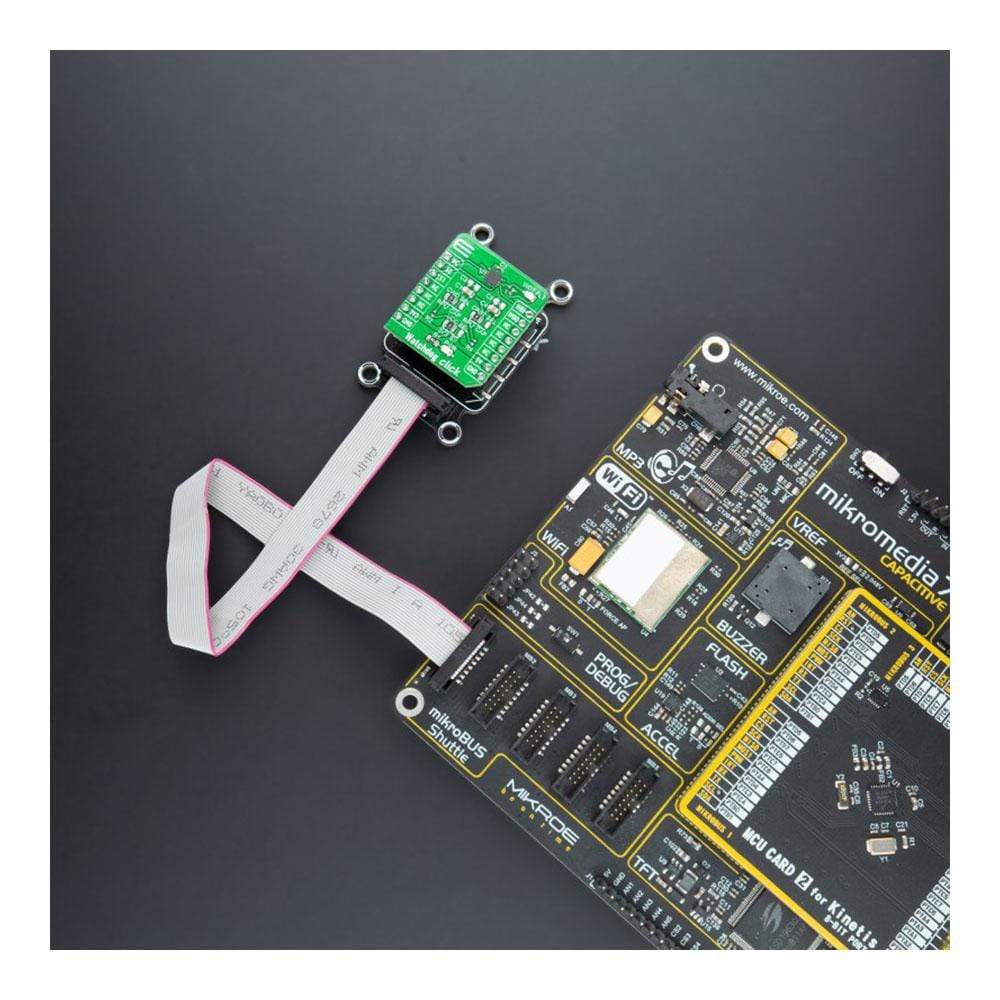
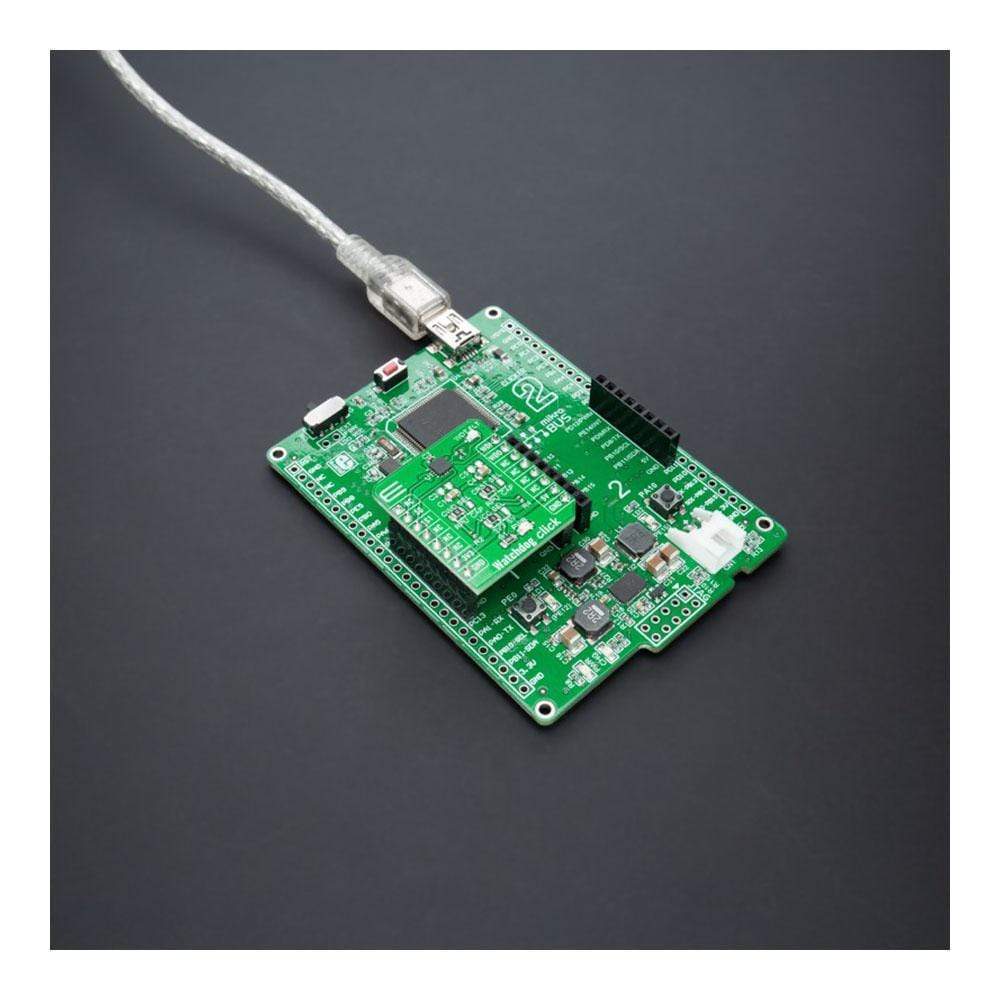
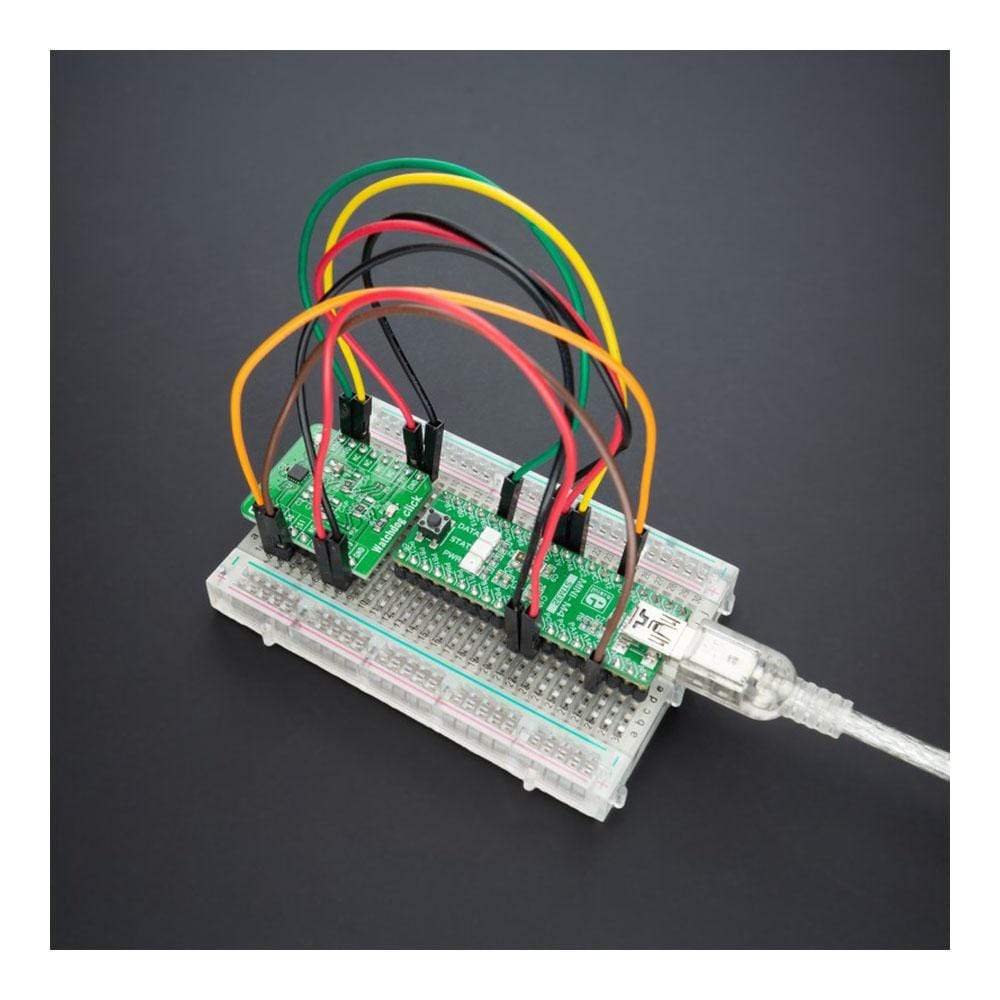
Overview
The Watchdog Click Board™ is a compact add-on board that contains a simple countdown timer for a wide variety of applications. This board features the TPS3430, a standalone watchdog timer with a programmable watchdog window and programmable reset delay from Texas Instruments. The TPS3430 has the watchdog output reset delay set by factory-programmed default delay settings or programmed by an external capacitor. It achieves 2.5% timing accuracy at the typical temperature of 25°C and can be disabled via two SET pins to avoid undesired watchdog timeouts during the development process or Power-On. This Click Board™ can be used as a countdown timer in MCU, DSP, FPGA, ASIC, and many more.
The Watchdog Click Board™ is supported by a mikroSDK compliant library, which includes functions that simplify software development. This Click Board™ comes as a fully tested product, ready to be used on a system equipped with the mikroBUS™ socket.
Downloads
Le Watchdog Click Board™ est une carte complémentaire compacte qui contient un compte à rebours simple pour une grande variété d'applications. Cette carte comprend le TPS3430, un minuteur de surveillance autonome avec une fenêtre de surveillance programmable et un délai de réinitialisation programmable de Texas Instruments. Le TPS3430 a le délai de réinitialisation de la sortie du chien de garde défini par les paramètres de délai par défaut programmés en usine ou programmés par un condensateur externe. Il atteint une précision de synchronisation de 2,5 % à la température typique de 25 °C et peut être désactivé via deux broches SET pour éviter les dépassements de délai de surveillance indésirables pendant le processus de développement ou la mise sous tension. Ce Click Board™ peut être utilisé comme compte à rebours dans les MCU, DSP, FPGA, ASIC et bien d'autres.
Le Watchdog Click Board™ est pris en charge par une bibliothèque compatible mikroSDK, qui comprend des fonctions qui simplifient le développement logiciel. Cette Click Board™ est un produit entièrement testé, prêt à être utilisé sur un système équipé du socket mikroBUS™.
| General Information | |
|---|---|
Part Number (SKU) |
MIKROE-4416
|
Manufacturer |
|
| Other | |
Country of Origin |
|
HS Code Customs Tariff code
|
|
EAN |
8606027381669
|
Warranty |
|
Frequently Asked Questions
Have a Question?
Be the first to ask a question about this.

